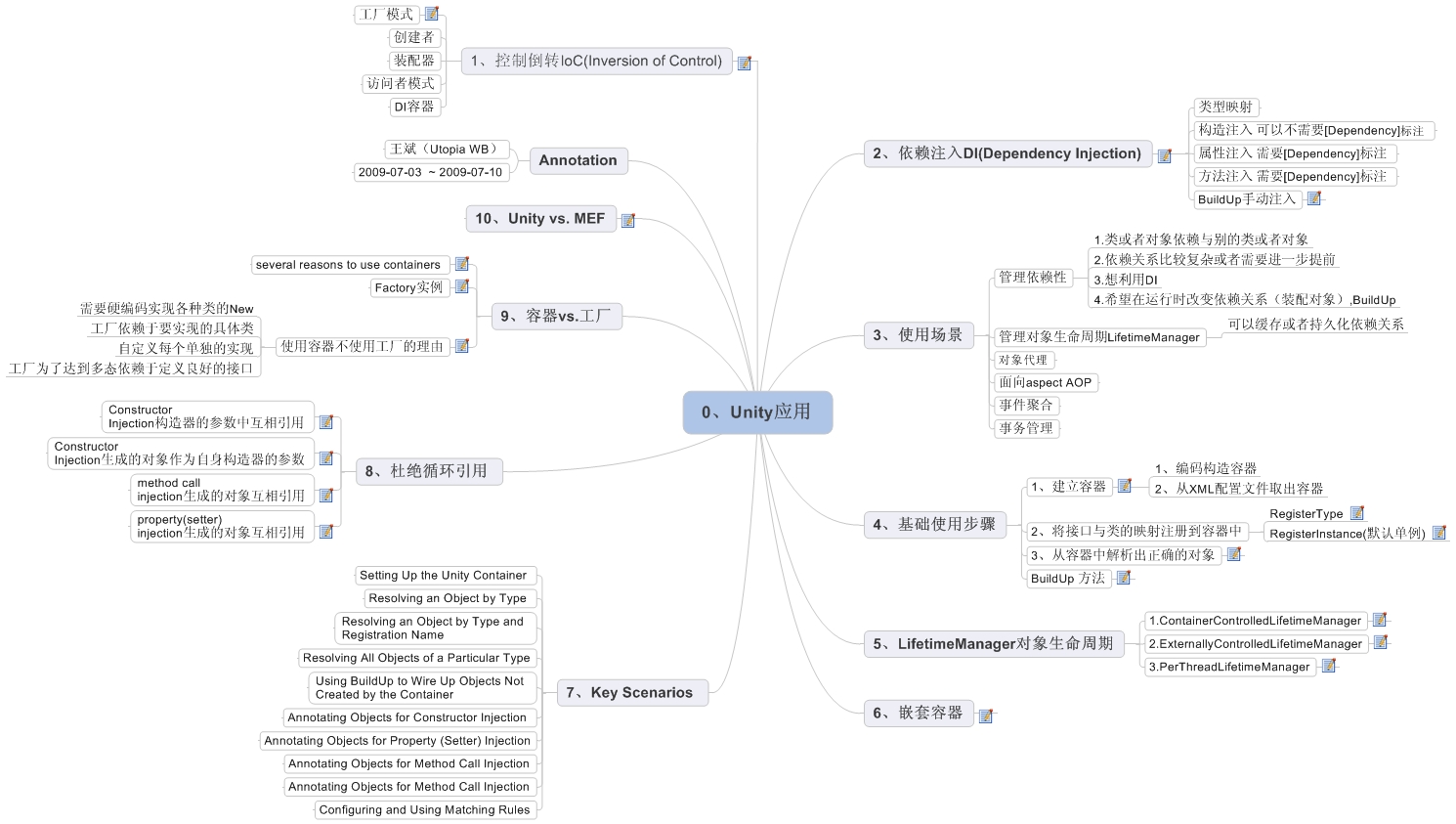0、Unity应用
 0、Unity应用 1
0、Unity应用 1
1 1、控制倒转IoC(Inversion of Control) 2
1.1 工厂模式 2
2 2、依赖注入DI(Dependency Injection) 4
2.1 BuildUp手动注入 4
3 1、基础使用步骤 4
3.1 1、建立容器 4
3.2 2、将接口与类的映射注册到容器中 4
3.2.1 RegisterType 4
3.2.2 RegisterInstance(默认单例) 5
3.3 3、从容器中解析出正确的对象 5
3.4 BuildUp 方法 5
4 5、LifetimeManager对象生命周期 5
4.5 1.ContainerControlledLifetimeManager 5
4.5 2.ExternallyControlledLifetimeManager 5
4.5 3.PerThreadLifetimeManager 6
5 6、嵌套容器 6
6 8、杜绝循环引用 6
6.1 Constructor Injection构造器的参数中互相引用 6
6.2 Constructor Injection生成的对象作为自身构造器的参数 7
6.3 method call injection生成的对象互相引用 7
6.4 property(setter) injection生成的对象互相引用 7
7 9、容器vs.工厂 8
7.1 several reasons to use containers 8
7.2 Factory实例 9
7.3 使用容器不使用工厂的理由 11
8 10、Unity vs. MEF 11
1 1、控制倒转IoC(Inversion of Control)
1.1 工厂模式
UtopiaObjectFactory
using System;
using System.Reflection;
using System.Configuration;
namespace UtopiaObjectFactory
{
/// <summary>
///将创建的对象放入缓存中,
///用的时候检查缓存是否存在对象,
///没用则创建对象
/// </summary>
public sealed class DataAccess
{
public DataAccess()
{ }
#region CreateObject
/// <summary>
/// 创建对象,不使用缓存
///<appSettings>
/// <add key="AProduct " value="strPath,strClassCacheKey)" />
///</appSettings>
/// </summary>
public static object CreateObjectNoCache(string path,string CacheKey)
{
try
{
object objType = Assembly.Load(path).CreateInstance(CacheKey);
return objType;
}
catch//(System.Exception ex)
{
//string str=ex.Message;// 记录错误日志
return null;
}
}
/// <summary>
/// 创建对象或从缓存获取,使用缓存
/// </summary>
public static object CreateObject(string path,string CacheKey)
{
object objType = DataCache.GetCache(CacheKey);
 0、Unity应用
0、Unity应用